Every so often I have encounters with the TS-not-TG group. I cherish these encounters because they often inspire me to do research. Sometimes transsexuals who argue for the destruction of the transgender community make statements that cause me to question my assumptions – which is a good thing!
I will take your community apart bit by bit until the day that it ceases to represent transsexuals. Let my people go and leave my people the fuck alone!
I enjoy having my perspective influenced by evidence and when people in the TS-not-TG camp make certain claims about the word “transgender” (eg, crossdressers forced it on transsexuals and therefore transsexuals are victims of a “Borg collective assimilation process”) I am inspired to look at what the evidence has to say.
Those who embrace the “Transgender as Umbrella” are more like the Borg of Star Trek: the Next Generation. Dealing with the Transgender Borg is like that. Push the right buttons and their program spits out the exact same response. Like the Borg, “Resistance is futile, you will be assimilated.”
Recently, I uncovered never-before documented (in the discussions about the term “transgender”) reports that cast some serious doubts about certain claims made by some TS-not-TG people. Prior to posting about the evolution of the word “transgender” in the 1970s and 1980s, many in the TS-not-TG group repeated variations of the following:
Now, Virginia Prince is to the Transgender Borg Collective what L. Ron Hubbard is to Scientology. That is to say the basis for much of the ideology although people have added to the dogma since.
and…
Christine Jorgensen was not transgender. Just as I am NOT transgender. She was like I am transsexual. Transgender is a social construct. A political identity that grew out of the heterosexual transvestite movement founded by people like Virginia Prince.
In other words, Prince coined the term, so the current term still implies Prince’s attitudes.
After discovering that people like Christine Jorgensen did indeed self-identify as transgender, one TS-not-TG person said:
The real issue is the transgender movement that came about in the early 90’s, purporting to represent everybody while steadily representing far less than that over time. This movement is what is poisonous, not the terminology.
While some of you might feel as if this seems like moving the goal post, that’s not the point; rather, the above statement by a TS-not-TG person is intriguing. The fact that the community now has access to new historical documentation is a direct result of this TS-non-TG person sharing their point of view with me… and I appreciate it. Had they not spoken up, I probably wouldn’t have had my interest directed toward this research.
The “transgender movement” as this commenter calls it is what I mean when I talk about a “transgender community”. In other words, we are both talking about individuals who support and work towards the same goals and can therefore be grouped together . I define this “movement” as a community, using the dictionary definition of community:
The above quote makes a number of assertions:
- There is a transgender community that “came about” in the early 1990s
- By stating that it “came about”, the author connotes that the post-1990s transgender community is different than the pre-1990s transgender community – so much so as to be singled out due to their difference.
- One difference between the post-1990s TG community and the pre-1990s TG community is that they purported “to represent everybody”.
- Another difference between the post-1990s TG community and the pre-1990s TG community is that they “steadily represent[ed] far less than that over time”.
- And yet another difference between the post-1990s TG community and the pre-1990s TG community is that the post-1990s TG community is “poisonous”.
Unfortunately, the author of this statement generally does not cite evidence to support their sentiments. This, of course, inspired me to look into what the TG community looked like prior to 1990 in order to see what, if anything, was substantially different. The result was that I’ve uncovered yet more never-before published evidence to add to the marketplace of ideas.
One charge I consistently hear from the TS-not-TG group is that grouping all individuals of non-cisgender background, experience or expression is something that is new. As another TS-not-TG put it:
Trying to retroactively apply the label to people who lived their lives prior to the creation of the social construct “transgender” violates their lives.
So, prior to the 1990s, did the TS and non-TS groups work together to form a larger group in order to pursue “common social, economic, and political interests” (see definition of “community”)? I can unequivocally say YES. In fact, that drive to pull different types of trans people together in order to, as a community of diverse people, improve our quality of life for everyone seems to be an idea that predates 1990 by a number of decades.
Consider this plea from a national transsexual organization to the transvestite and drag community in 1975:
… The courts and legislative people refuse to rule in favor of transsexual persons even when they are legally right. These so-called professional people act solely on the basis of their own emotions and repulsions rather than medical or legal reasons. We consider their actions to be arbitrary, capricious and prejudicial be denying people their God-given right to live in happiness and peace as a human being.
Chrysalis, an organization of transsexual persons, has decided to fight. In order to do this we need your help and support. You many not consider this your fight. However, whenever any person of any sexual minority is denied their right, we all begin to lose those things we have. It wasn’t long that none of us could be proud and stand up for what we are.
Its about time the gays, TVs and TSs break down the barriers between us and work together. United we stand; derived we stand still wishing something would happen.
– Drag Magazine, 1975
That 36 year old statement by a transsexual sounds an awful lot like the tune the current transgender community sings.
In the mid 1970s, another inclusive organization formed. This one was called the United Transvestite and Transsexual Society (UTTS).
Years before that in 1970, the Transvestite/Transsexual Action Organization formed.
In 1971, the “Androgynous Organization” set up a “transsexual help center” that was sponsored by the Gay Liberation Front.
In the mid-1970s, a Los Angeles political group called the Transsexual/Trans-Gender Rap Group” was formed.
Another 1970s group called themselves simply “Transsexuals and Transvestites”.
Lets not forget about the long, yet explicitly inclusively named “Transvestite, Transsexual, Female Impersonator and Gender Identity Program of Gay Community Services” in California.
In fact in 1974, UTTS said, “None of us want to split the transvestite and transsexuals from within…” They went on to state that they believe in “change through the channels and informing the public…”
Again, all of these sentiments sound rather familiar in the modern post-1990s transgender community.
Now, lets consider how these sentiments played out in real life back in the 1970s:
Did you catch that inclusivity? If you didn’t let me quote the words written by a transsexual woman: “By the time you read this letter, cross-dressing should be legal in the City of Detroit. I, along with another transsexual and a transvestite, decided to do something about the law in Detroit.”
I’ve heard some TS-not-TG people rail against Leslie Feinberg for trying to invent non-gender specific pronouns. Consider this Chicago Tribune article from the 1970s:
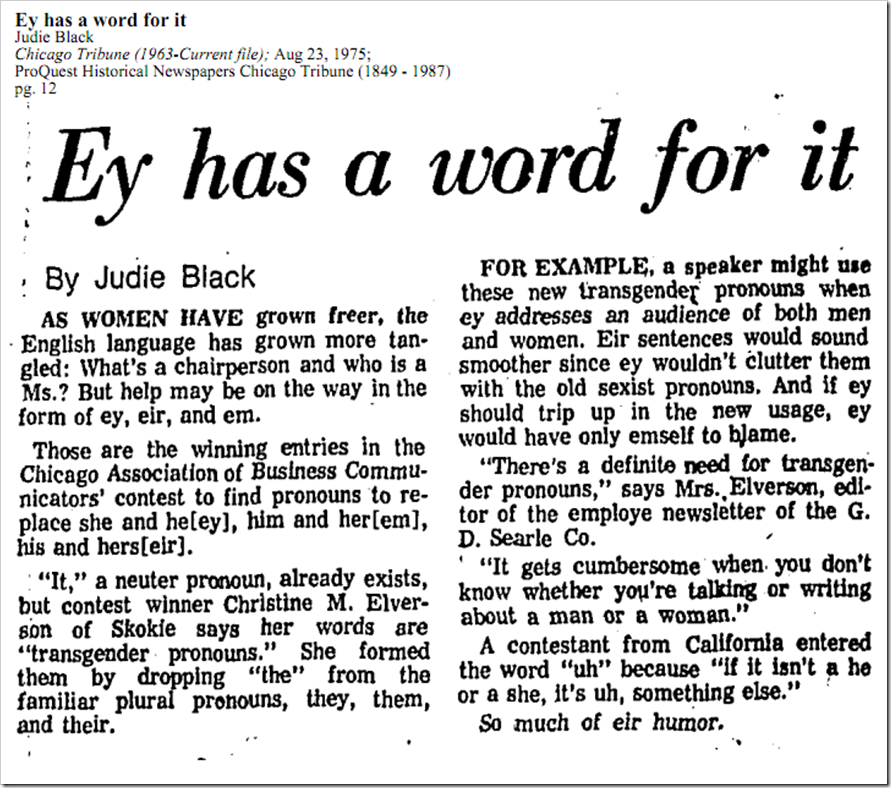 As one researcher notes, the attempts to create English language gender-neutral pronouns aren’t anything new:
As one researcher notes, the attempts to create English language gender-neutral pronouns aren’t anything new:
Besides the centuries-old instinctive use of “their”, people have been formally concerned about the gendered pronoun problem since at least 1795, and have been coining new pronouns for about the last century and a half. The first, sometime around 1850, were “ne, nis, nim”, and “hiser”. In 1868, “en” appeared, followed by a rush in 1884: “thon, thons”, “hi, hes, hem”, “le, lis, lim”, “unus”, “talis”, “hiser, himer”, “hyser, hymer”, and “ip, ips”. These things come in bursts, with a flurry of interest in certain circles while many try their hand at neologism, then an eventual dying out, only to be revived by another person in the future. (See the charts below.) Many more coinings followed between 1888 and 1891, then interest died for two decades. Interest picked up again during the thirties and forties, then died once more. Interest exploded in the seventies with the rise of a new international feminist consciousness, but it seems to have mostly died out again around in the 80’s backlash. (Note that the data in the graphs is incomplete, and comes from a book that was published in 1986.) Nevertheless, interest persisted at a lower level, and has flowered into international usage in some pockets of the net. The pronouns “sie, hir, hirs, hirself” seem to have been the most widely adopted, found mainly in Usenet groups involving romantic relationships, and the alternative forms “zie, zir, zirs, zirself” also have a following. The set “ey or e, em, eir, eirs, eirself or emself” has found more limited use.
Others have railed against the current transgender community for inventing the idea of gender-identity. But was it really the current transgender community that tried to popularize this idea?

Is this out of some 1994 transgender manifesto? Nope. It comes from a 1977 booklet titled “Information for the family of the transsexual and of children with gender identity disturbances”.
As is the case in the post-1990s transgender community, was there a recognition that there were distinctively different types of people of a non-cis history, experience or expression who still, nonetheless shared commonality in the pre-1990s transgender community? Lets see what they thought in 1971:
The above is an piece from a professional female impersonator writing for a magazine called Female Mimics. She goes on to explain that while there are many different types of trans people, we do share some common problems and for that reason, she is making herself available to help where and how she could.
So, lets move forward in time to see if this idea of grouping all non-cis people continued:
Well, it looks like the so-called “Borg Collective” was alive and well in 1979. So, did this approach kill the ability for transsexuals to gain their civil rights? Nope. Within just a few years of writing this letter, Houston’s crossdressing ordinance was revoked and all trans people could walk outside without being arrested.
So, this brings me to…
 I will concede a point to the individual I initially quoted. From the evidence I see, it does indeed seem that the post-1990 transgender community is different than the pre-1990 community. The evidence seems to indicate a fairly enormous step forward in terms of rights, employment protections and acceptance by the general population since 1990. And perhaps most germane to the point of this post, this post-1990 step forward seems to have been built upon attitudes towards trans community-building that were 20 years old by the time 1990 rolled around.
I will concede a point to the individual I initially quoted. From the evidence I see, it does indeed seem that the post-1990 transgender community is different than the pre-1990 community. The evidence seems to indicate a fairly enormous step forward in terms of rights, employment protections and acceptance by the general population since 1990. And perhaps most germane to the point of this post, this post-1990 step forward seems to have been built upon attitudes towards trans community-building that were 20 years old by the time 1990 rolled around.
At this point, I think I’m going to see what sort of actual evidence the TS-not-TG folks are able to bring to the marketplace of ideas.
So, before you begin slamming my comment section with how wrong I am, let me repost a recent response I made in another post:
This is a good example of the type of behavior I encounter with the TS-not-TG group. For many of them, if they’re not pressing their point peppered with emotionally appealing buzz-words like “assimilation” and “Borg Consciousness” to bowl you over with BS, they tend to resort to logical fallacies (usually strawman, moving the goal post and/or a non sequitur) and if that doesn’t work, they attack using ad homs.
Seriously folks, if all you have are baseless conjectures (If ABC was the way I want it to be, then XYZ would be the result. Why? Cuz I say so!) then you have no argument. Conjecture, fallacies, various appeals to emotion, buzz-words and personal attacks ARE NOT arguments; they are what people use when they have no argument.
I’d love to see some evidence-based claims from the TS-not-TG side of the road. Start with reporting on an apples-to-apples example of how transsexuals alone achieved what the Houston transgender community (TS people working with non-TS people as equals) has achieved – in one of the most inhospitable parts of the country, I might add.
Offer some historical documentation proving that TS and non-TS people never wanted to form a more inclusive community that worked together for a common cause. When you make an assertion about something, back it up with evidence. If the TS-not-TG group can not do that, I can not take their arguments seriously.
Historical Document Disclaimer:
As I continue to publish historical documents relevant to the debates going on around the term transgender, I will include this disclaimer in hopes that it will cut down on having my position strawmaned to death.
The ideas found within the transgender community came from somewhere; they didn’t magically pop into existence on January 1, 1990. My intent in posting these historical documents is to dispel some historical inaccuracies some within the TS-not-TG group continue to popularize. I continuously find ideas that are purported to have originated within the so-called “transgender Borg”/“slave master” community sometime in the early 1990s and which was then supposedly thrust upon an unsuspecting transsexual community were in fact, championed by transsexuals leaders prior to 1990.
I find that I agree with practically everything those in the moderate TS-not-TG group claim with one exception. Many assert that the “transgender umbrella” idea doesn’t refer to a group of unique allies who find unity in a common cause; rather, many in the TS-not-TG group simply assert that the term “transgender” robs all transsexuals of their unique experience. In fact, most transsexuals do not feel that the we should be segregated away from all of our allies in our continued fight for equality and, as these historical documents continue to reveal, transsexual people of history do not see a need to rip the transsexual community away from other communities to go it alone.
For a view that very closely resembles my own views on this issue, check out The Death of the “Transgender Umbrella” by Mercedes Allen. My reservations about this article are summed up nicely within the comment section by Dr. Jillian Weiss:
Great article, but you can’t create a movement to “not be transgender.” Critique is valuable, but by itself, it can only alter an existing movement, not build one of its own. Movements have to be for something. If we could create a viable “transsexual movement,” I’m for it. But it is unlikely that such a movement can occur at this point in time. Very unlikely. Although I agree with the idea on a theoretical basis, I don’t think it will ever go beyond talk.
So, if you take Allen’s article and combine it with what Weiss had to add, you’d have an almost perfect representation of my views concerning the TS-not-TG debate.
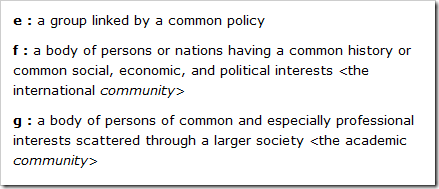
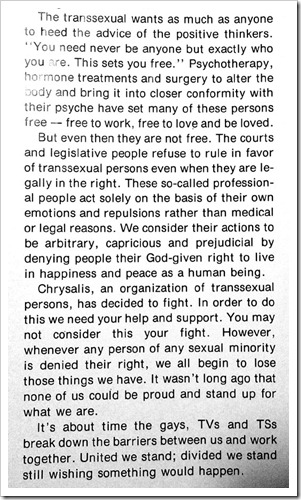
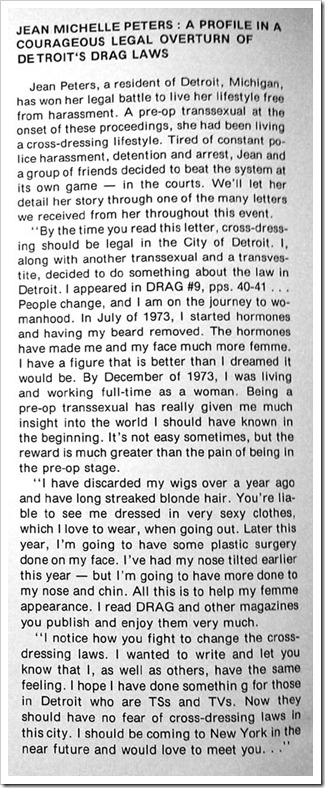
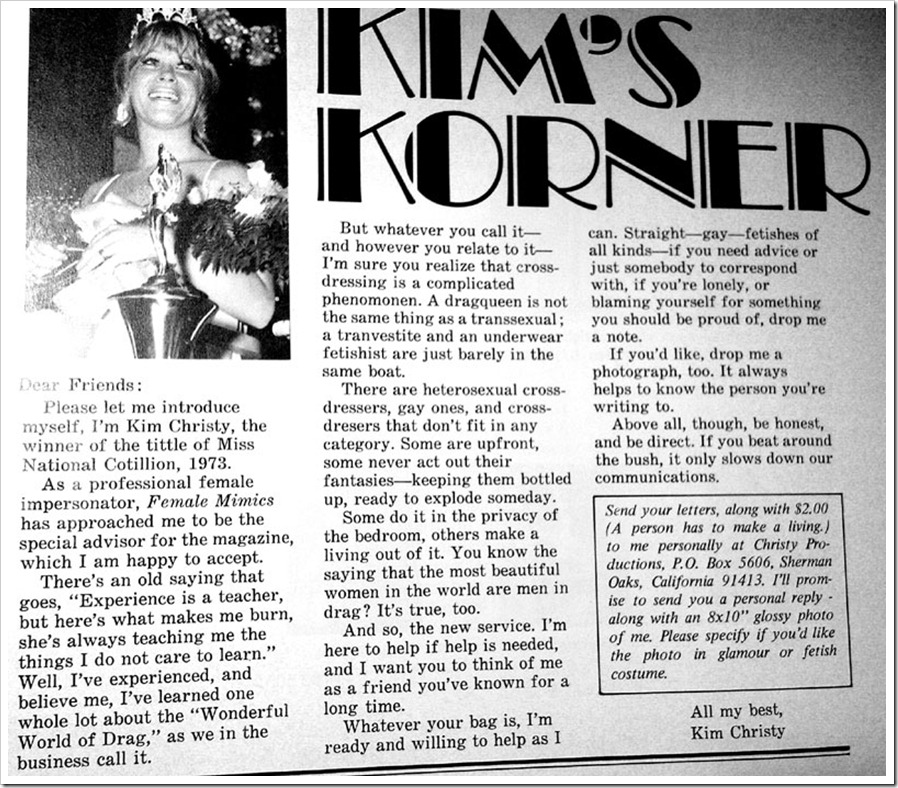
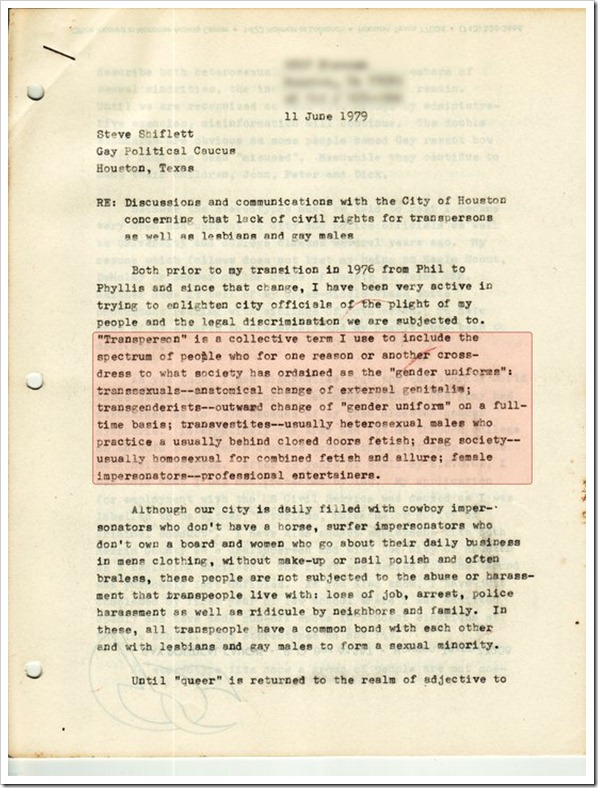
Leave a Reply
You must be logged in to post a comment.